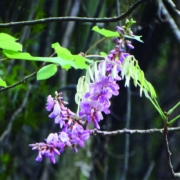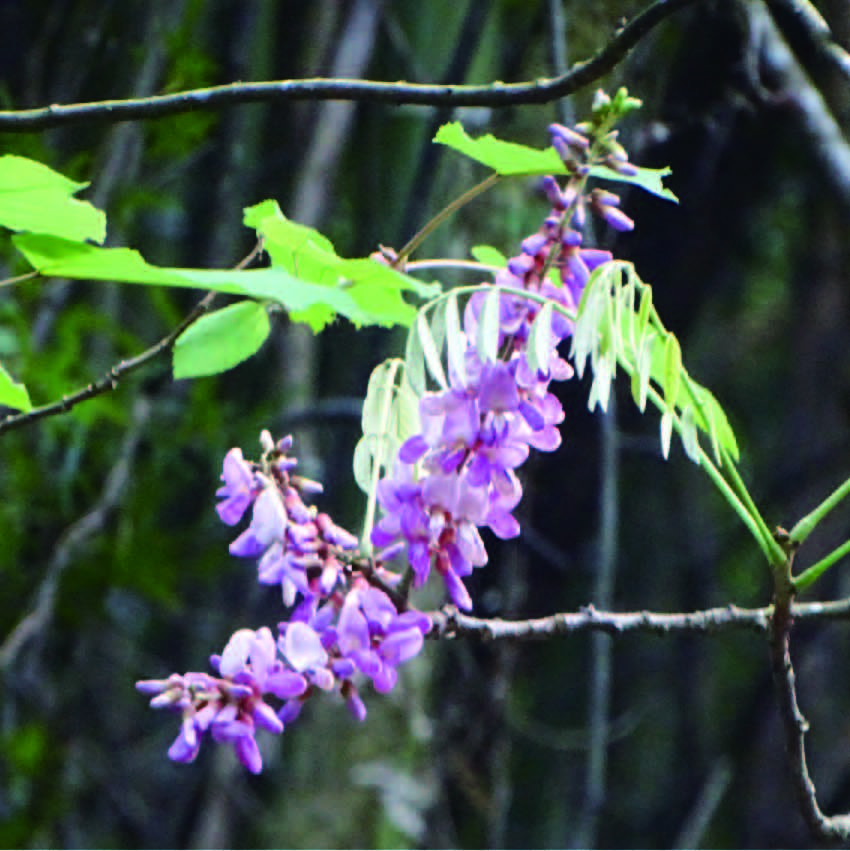台灣魚藤 Millettia pachycarpa Benth
圖片來源 : https://www.flickr.com/photos/yangklin/51155378253/in/photolist-2kWqFJe-25aQ8Je-2fGMc5S-2eoqVQT-2fMvp5L-2mFhsHB-2kWm48A-2kWm454-2mAoVWa-2mcBoGB-2mcE4US-2mcwBUs-2mcBqkM-2mcBqsf-2mcBo4H-2mcBqpK-2mcFs8y-2mcFqWR-2mcFs4q-2mcwA7z-2mcAn9S-2mcE3Ex-2mcAkkS-2mcBo6b-2mcE3Az-2mcBqC5-2mcFrox-2mcAkZn-2mcE3Gg-2mcAktn-iGMa4j-dKFFc7-9Wnyuf-9WjHEB-2mcBpAv-2mcwAAa-2mcFqBs-2mcAnoj-2mcEqLF-2mczDAn-2mcwAQ3-2mcBqDc-2mcE2vP-2mcDpyF-2mcFs26-2mcAkYv-2mcBoQ7-2mcwAwY-2mcFqWa-2mcwAZm
(如果轉摘對著作者有侵權之處,請聯繫逐鹿文創園區小編我們會即刻刪除。)
台灣魚藤 Millettia pachycarpa Benth
鄒族人觀念中
所有山川資源都是由土地神祇所掌管與賜予
同一溪流不同河段則屬於不同氏族的獵場
毒魚是漁獵方法之一
台灣魚藤由於根莖含魚藤酮
是用以毒魚的主要植物
毒魚也是群體行動
氏族長老率族人來到河岸後
先由長老以米酒、糯米糕等進行祝禱儀式
部落長老裸身下水仰泳象徵著祈求魚獲的翻肚
而將魚藤根部搗碎、放毒及撈取等步驟,都是聽令長老集體行事。
所捕得的漁獲並依體型分大、中、小分類擺放於姑婆芋葉上
再分享氏族所有成員
而傳統毒魚儀式如有女性參與
視為對神衹的不敬
毒魚傳統儀式曾在1970年代舉辦,後便成了絕響。
魚藤之毒主要在於毒昏溪魚
毒性經活水稀釋後
魚兒便又清醒恢復活動
此外由於河川分段分屬不同氏族
為不損及下游河段另一氏族財產
毒魚還有另一解毒植物便是地瓜
族人將地瓜敲碎灑置於下游端
便可中和魚藤的毒性
保護下游河段獵場的魚類生態
魚藤與地瓜也是鄒人相生相剋的自然經驗
引用資料 : https://smiletaiwan.cw.com.tw/article/4317
Taiwanese fish plant Millettia pachycarpa Benth
In the concept of the Tsou people
All mountain and river resources are controlled and bestowed by the gods of the land.
Different sections of the same stream belong to the hunting grounds of different clans.
Poisonous fish is one of the methods of fishing and hunting
Taiwanese rotten root contains rotenone in its rhizome
Is the main plant used to poison fish
Poisonous fish also act in groups
After the clan elders led the clansmen to the river bank,
First, the elders perform a blessing ceremony with rice wine, glutinous rice cakes, etc.
Tribal elders swim naked in the water and swim on their backs to symbolize the turning of the belly in order to pray for fish.
The steps such as crushing the roots of the fish vine, poisoning them, and fishing them out are all done collectively by the elders.
The catches are classified into large, medium and small sizes and placed on the taro leaves.
Share with all members of the clan
And if women participate in the traditional poisonous fish ritual,
regarded as disrespectful to gods
The traditional ritual of poisoning fish was once held in the 1970s, but it has since become extinct.
The poison of fish vine mainly lies in poisoning the faint stream fish
Toxicity after dilution with living water
The fish wakes up and resumes activities
In addition, because the river sections belong to different clans,
In order not to damage the property of another clan in the lower reaches of the river
Another detoxifying plant for poisonous fish is sweet potato
The tribesmen smashed the sweet potatoes and scattered them downstream.
It can neutralize the toxicity of fish vine
Protect the fish ecology of hunting grounds in the lower reaches of the river
Fish vines and sweet potatoes are also the natural experience of the Tsou people that they are mutually reinforcing each other.
Citation information: https://smiletaiwan.cw.com.tw/article/4317





